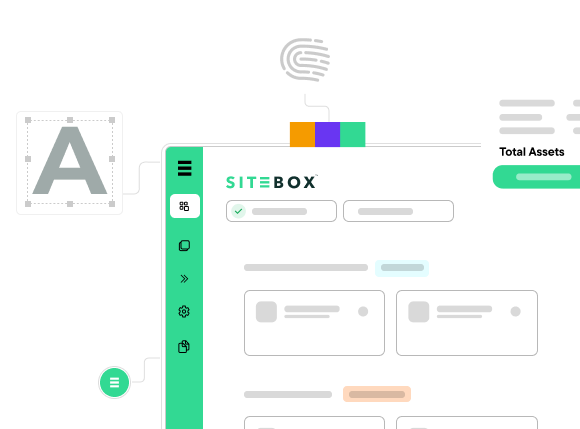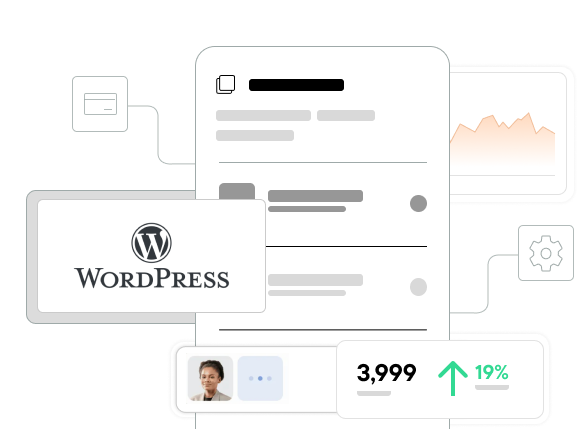Mobile applications are everywhere – from e-commerce to news to social media. These apps rely heavily on fast, secure, and scalable APIs to deliver real-time content and interactions. For teams already invested in WordPress, the natural question arises: Can WordPress serve as a backend for mobile apps?
The answer is yes – but not out of the box.
While WordPress comes with a REST API, building scalable WordPress APIs for mobile apps requires optimization, customization, and smart infrastructure decisions. In this guide, we’ll walk through the principles, techniques, and best practices needed to turn your WordPress backend into a performant API powerhouse.
What Is the WordPress REST API?
The WordPress REST API provides a standard way to access your site’s data (posts, pages, users, media) via HTTP requests. It’s built into WordPress core and responds with JSON.
Basic example:
GET https://example.com/wp-json/wp/v2/postsYou can fetch content, submit data, or extend the API to meet your needs.
Why Mobile Apps Need More
Mobile apps expect APIs to be:
- Fast: No one waits 2+ seconds for an API response
- Lightweight: Minimal, optimized JSON with no bloat
- Scalable: Handle thousands of users concurrently
- Secure: Protect data from unauthorized access
- Reliable: Support failover and quick recovery
WordPress needs a few upgrades to meet these expectations at scale.
Creating Custom API Endpoints
Custom endpoints let you control what data is returned and how it’s structured. Use register_rest_route() to define your own:
add_action('rest_api_init', function () {
register_rest_route('mobile/v1', '/latest-posts/', [
'methods' => 'GET',
'callback' => 'get_latest_posts',
'permission_callback' => '__return_true',
]);
});
function get_latest_posts() {
$posts = get_posts([
'numberposts' => 5,
'post_status' => 'publish'
]);
return rest_ensure_response($posts);
}This provides a clean, purpose-built endpoint like:/wp-json/mobile/v1/latest-posts/
Optimizing Queries and Payloads
Use WP_Query with specific fields to reduce overhead:
$query = new WP_Query([
'post_type' => 'post',
'posts_per_page' => 10,
'fields' => 'ids'
]);Avoid returning the full post object unless needed. Use rest_prepare_post filter to trim the response.
Authentication for Mobile Apps
You can’t rely on browser-based cookies. Use:
- Application Passwords (basic but secure over HTTPS)
- OAuth 2.0 (more complex, good for large apps)
- JWT Authentication: Lightweight and mobile-friendly
Example JWT plugin: JWT Authentication for WP REST API
Authorization: Bearer your.jwt.tokenCaching API Responses
To prevent load spikes, use:
- Transient API: Cache responses for a short time
$response = get_transient('latest_posts');
if (!$response) {
$response = get_latest_posts();
set_transient('latest_posts', $response, 60);
}- Object Caching: With Redis or Memcached for speed
- Edge Caching: Use a CDN to cache entire API responses globally
Rate Limiting and Throttling
Prevent abuse with basic request limits. Use plugins or custom logic to block IPs or throttle requests:
$ip = $_SERVER['REMOTE_ADDR'];
$requests = get_transient('api_rate_' . $ip) ?: 0;
if ($requests > 100) {
return new WP_Error('rate_limit', 'Too many requests', ['status' => 429]);
}
set_transient('api_rate_' . $ip, $requests + 1, 60);Code Examples
Minimal Custom API Endpoint
add_action('rest_api_init', function () {
register_rest_route('app/v1', '/menu/', [
'methods' => 'GET',
'callback' => function () {
return [
['label' => 'Home', 'url' => '/'],
['label' => 'Shop', 'url' => '/shop'],
];
},
'permission_callback' => '__return_true',
]);
});Sanitizing and Validating Input
function get_user_data(WP_REST_Request $request) {
$id = absint($request->get_param('id'));
if (!$id) {
return new WP_Error('invalid_id', 'Invalid ID', ['status' => 400]);
}
$user = get_user_by('ID', $id);
return $user ? $user->data : new WP_Error('not_found', 'User not found', ['status' => 404]);
}Using Transients to Cache API Output
function get_cached_posts() {
$cache = get_transient('cached_api_posts');
if ($cache) return $cache;
$posts = wp_get_recent_posts(['numberposts' => 10]);
set_transient('cached_api_posts', $posts, 300);
return $posts;
}Best Practices
✅ Keep Responses Lightweight
Avoid loading all post data. Return only fields needed by the app.
✅ Paginate Everything
APIs should never return huge lists. Use:
GET /wp-json/wp/v2/posts?page=2&per_page=10✅ Sanitize and Validate
Never trust user input. Use sanitize_text_field, absint, etc.
✅ Secure Endpoints
Use proper auth. Avoid __return_true on sensitive endpoints.
✅ Cache Aggressively
Use transients, object caching, and edge/CDN caching to prevent backend overload.
Conclusion
Building scalable WordPress APIs for mobile apps is possible—and increasingly common in headless and decoupled setups. While the core REST API provides a solid foundation, scaling it requires:
- Custom endpoints
- Smart caching
- Authentication
- Rate limiting
- Secure, optimized data handling
With the right tools and practices, WordPress can serve as a powerful backend for mobile apps at scale.
How Sitebox Solves This
Sitebox makes building scalable WordPress APIs easy—even for teams without deep DevOps expertise.
Here’s how:
- ⚡ Edge API Caching: Automatically cache your custom endpoints at the edge for lightning-fast performance.
- 🔐 API Security Built-In: Sitebox supports JWT, API tokens, and rate limiting out of the box.
- 🌍 Global Delivery: Your mobile users get API responses from the nearest region—lower latency, better UX.
- 🚀 GitOps for API Code: Store and deploy custom API logic from Git using Sitebox’s CI/CD tools.
- 🧠 Smart Analytics: Monitor endpoint usage and optimize based on real traffic.
Whether you’re launching a small app or scaling to millions of users, Sitebox gives your WordPress APIs the infrastructure they deserve.




